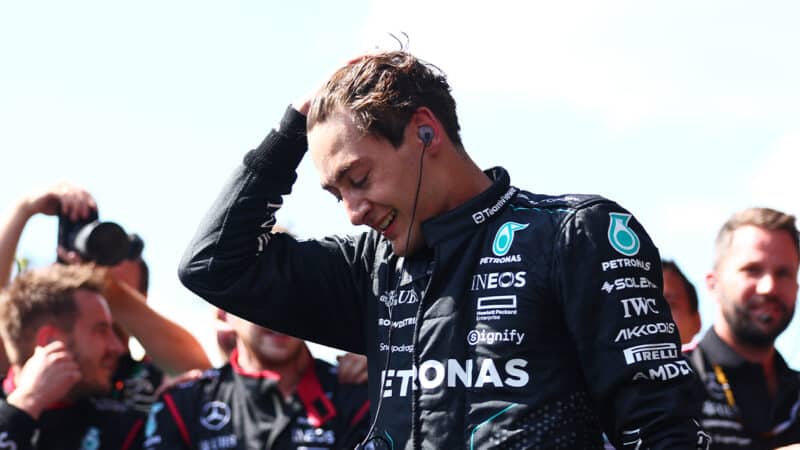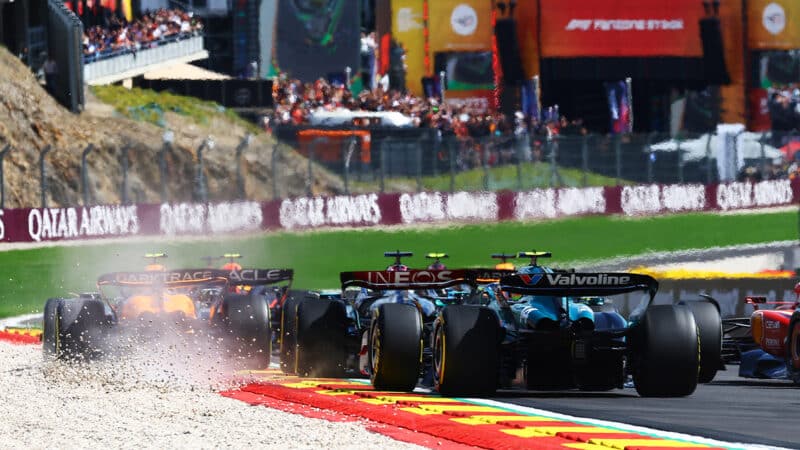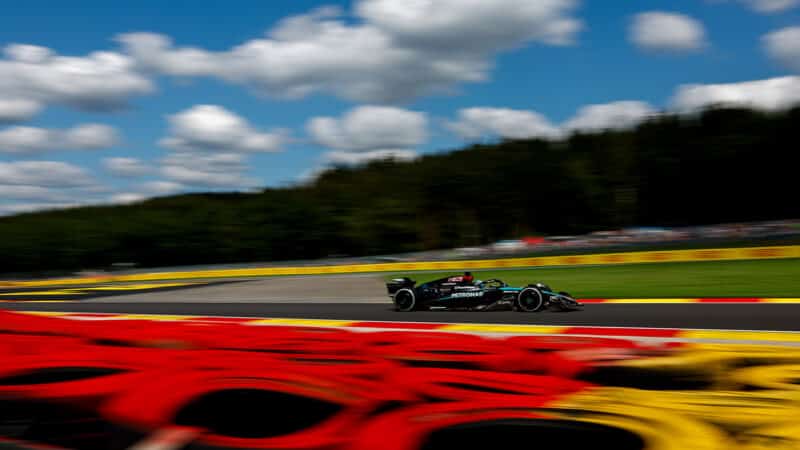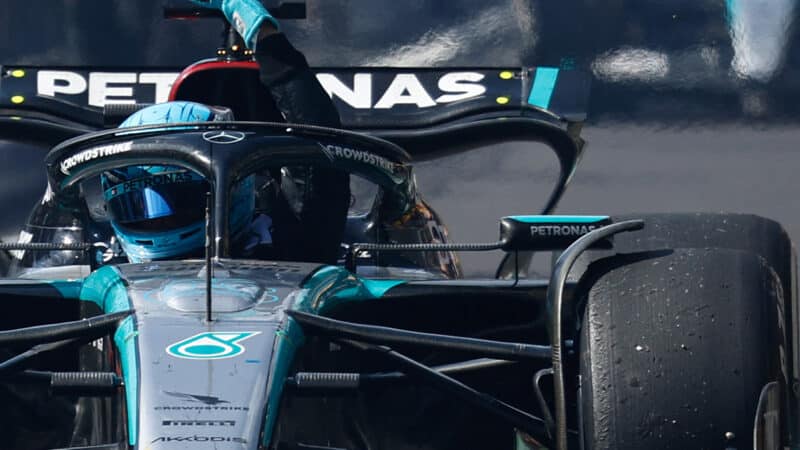Russell's gut feeling took Mercedes into unknown Belgian GP territory
Racing with an unproven set-up and — thanks to George Russell's instinct — an untested strategy, Mercedes surprised everyone with a Belgium 1-2, writes Mark Hughes. But the root of F1 success may have been its downfall

Russell was only disqualified after the Belgian GP victory celebrations
Bryn Lennon/F1 via Getty Images
The Mercedes was a bouncing ill-balanced handful around Spa on Friday. It finished 1-2 on Sunday, one-stopping George Russell with his two-stopping team-mate Lewis Hamilton on his back (and Oscar Piastri’s McLaren breathing heavy from within the DRS zone of Hamilton). The car had been transformed by changes made overnight on Friday, but this wasn’t apparent until Sunday, given that Saturday was wet throughout.
After the race Russell was found to be 1.5kg underweight and was therefore disqualified. That was an unforeseen complication of him converting to the one-stop, a strategy that no-one believed in pre-race.
Max Verstappen had set the fastest qualifying time in the damp of Saturday with his big-winged Red Bull by over 0.6sec but was taking a 10-place power unit change grid penalty. That big wing and a shortening of the DRS zone by 75 metres meant overtaking wasn’t easy and he spent most of the race in a DRS train eating up his tyres. Which is why he finished an unremarkable fifth across the line.
Ferrari wasn’t Mercedes or McLaren fast here but Charles Leclerc drove a beautiful lap in the wet to qualify second-fastest and therefore start from pole. But as usual at Spa the cars sorted themselves out into competitive order on race day and after leading the first couple of laps he was passed in turn by Hamilton and Piastri. Fourth across the line was the maximum that could reasonably have been expected.

Leclerc started on pole after Verstappen’s grid penalty
Ferrari
McLaren under-achieved a little on Saturday, Lando Norris and Piastri just fourth and fifth, their low-winged set ups in the intermediate conditions making it easy to make small errors. Piastri made some amends on race day and might have been fighting Hamilton for the victory were it not for Russell’s inspired call to not bother with a second stop. After being out-accelerated off the grid by Piastri from the row behind, Norris ran wide at la Source and lost two further places. Which put him in DRS train mediocrity for the rest of the day, sixth across the line.
Had Piastri not locked up and overshot at his second stop, he’d have been a couple of seconds quicker out of the pits and may have passed Leclerc on his first attempt rather than his second a lap later. Which in turn may well have got him to within Hamilton’s DRS zone with two laps to go rather than one. Which might have made a difference.

Dip into the gravel at start consigned Norris to the DRS train
Mark Thompson/Getty Images
Sergio Perez dropped like a stone from his front row grid position just as Red Bull is considering whether to retain him for the rest of the year. An eighth place hardly helped his cause as McLaren took further chunks out of Red Bull’s lead in the constructors’ championship.
So went the stories of the top four teams. Which leaves a couple of key questions.
How did Russell make a one-stop work?
Because the tyre deg was way better than it had looked on Friday and because overtaking was much more difficult than in previous years, both factors very helpful for a one-stop. But also because of a gut feeling Russell got once he was in the lead.

Russell said he felt at one with the tyres
Jiri Krenek/Mercedes-AMG
“Suddenly the tyres and car felt so good…. About 15 laps to go. When Oscar pitted and Charles and Lewis. I was watching the big TV screens after Eau Rouge every lap and I could see they weren’t catching me as quickly as I was expecting. My lap times were improving and we were driving full gas around here and the track was getting faster and faster. The grip was improving all the time and the tyres were in a great state.
“But I was still questioning why no-one else had done it. I thought, ‘I must be missing something here’ because everyone’s peeling into the pits.
“It’s important to go with your gut but everyone pitted and the Friday data said a one-stop was not viable. But I felt at one with tyres and knew that would give me a bit of money back at the end. There are so many data points on the car, but as a driver you can feel how the car is sliding over the track and you gotta trust your gut sometimes.”
Why was the car underweight?
No-one was expecting a one-stop race so no calculations were done based around thin tread tyres which had done 77% of the race’s distance. Compared to two-stop tyres which had maybe done 40% distance, they could quite feasibly have been 0.375kg per tyre lighter. Which would add up to the 1.5kg by which the car was underweight.

Russell celebrates victory, but worn tyres may have been his downfall
Simon Wohlfahrt / AFP via Getty Images
Furthermore, at Spa – because of the circuit length – the cars don’t do a slow-down lap. They simply turn 180 degrees into the pits. So there’s no opportunity to pick up the rubber marbles to add weight.
“We have to take our disqualification on the chin,” said team boss Toto Wolff. “We have clearly made a mistake and need to ensure we learn from it…. Despite the disqualification there are many positives we can take away from this weekend. We had a car that was the benchmark in today’s race against two different strategies. Only a few months ago that would have been inconceivable.”
